




| Enoplognatha of the ovata group (Enoplognatha ovata-latimana (Clerck, 1757 - Hippa & Oksala, 1982)) |





|
|
Scientific name: Enoplognatha ovata-latimana (Clerck, 1757 - Hippa & Oksala, 1982) Common name: Enoplognatha of the ovata group Other names: Comb-footed Spider, Candy Stripe Spider French name: Order: Araneae Family: Theridiidae Size: Females: 4 to 6 mm; Males: 3 to 5 mm. Biotope: Hedgerows, meadows, parks and gardens. Web: It is located in low growing vegetation and made up with a three dimensional network of threads. Observation period: May to October. Geographic area: Europe, introduced to North America. |
It is impossible to differentiate Enoplognatha ovata from Enoplognatha latimana without a close exam of the genitalia. These small and fragile-looking spiders show long and partially transparent legs. There is a black ring at the bottom of the fore legs' tibia. The cephalothorax shows a thin dark band on the central axis and a thin black line on the edge. The abdomen is a whitish, yellowish or greenish ground colour. There are two rows of widely spaced black dots on the upper side. The abdomen may show three colour variants, the first one without reddish markings, the second one with two reddish longitudinal stripes on both sides of the thin dark line and the third one where both reddish stripes merge in a single one. The female will guard its greyish blue egg cocoon until the small spiderlings hatch out. |
| [To know more about the Enoplognatha of the ovata group] [Next picture] [Top] |
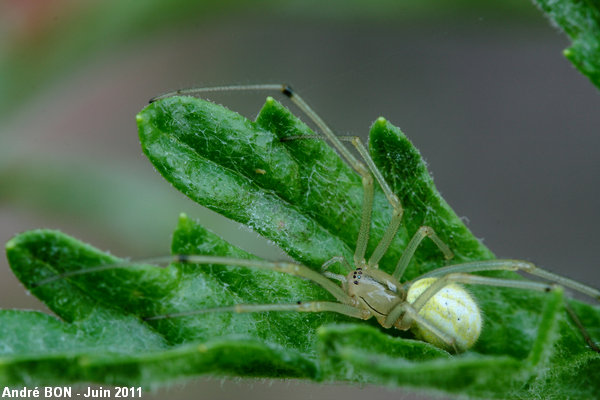
|
Here is the form with a whitish yellow abdomen without any reddish markings. |
| [To know more about the Enoplognatha of the ovata group] [Next picture] [Previous picture] [Top] |
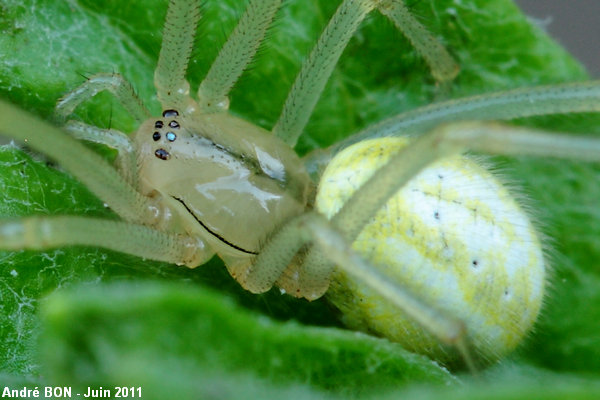
|
This picture, which is a crop, was shot without flash, using a tripod and a wired remote control. This requires a perfectly immobile spider on a perfectly immobile plant. |
| [To know more about the Enoplognatha of the ovata group] [Next picture] [Previous picture] [Top] |
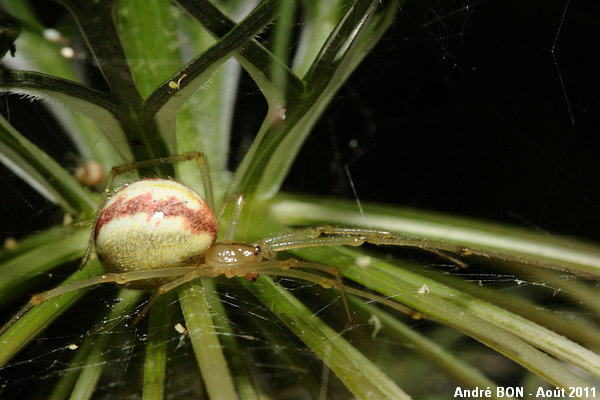
|
Here is the form with two reddish stripes. |
| [To know more about the Enoplognatha of the ovata group] [Next picture] [Previous picture] [Top] |
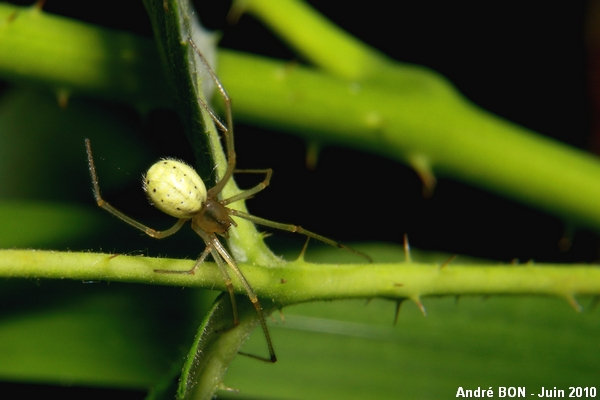
|
I had classified, by error, this spider as a Cucumber Green Spider. Here is one error which is fixed! |
| [To know more about the Enoplognatha of the ovata group] [Previous picture] [Top] |
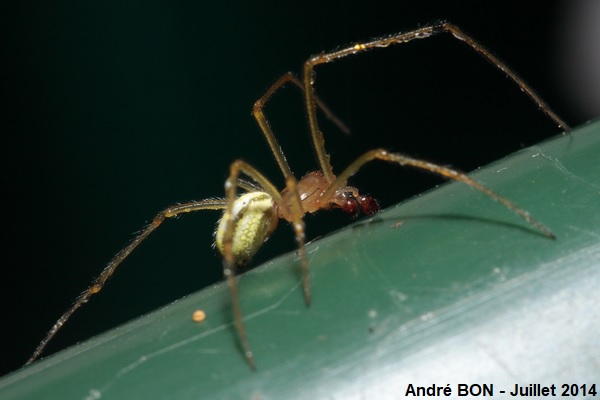
|
Here is one male this times. A close exam of the palpal bulbs can be used to differentiate both species. As I do not do any capture and as my pictures shot in the field are not so good, we cannot decide for one species or the other. |